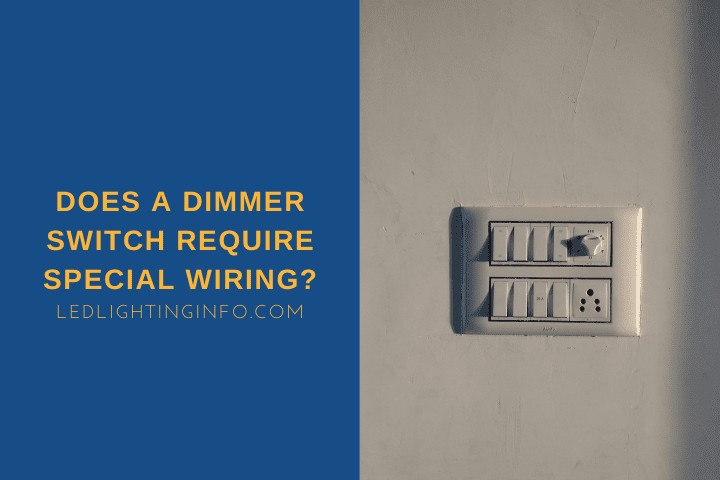A dimmer switch is handy for adding just the right atmosphere to your home.
It removes any confusion about the bulbs’ brightness since you can always set the correct level.
It makes it easy to set the right mood, whether you need a bright wake-up or a relaxing, dim light for the evening.
But how difficult are they to install?
Do they need special wiring to get them set up?
Dimmer switches don’t need special wiring at all. Single-pole dimmer switches can just replace existing single-pole light switches, and 3-way dimmers can easily replace a standard 3-way switch or be used as a single-pole switch with one wire capped off.
This makes dimmer switch installations really easy, but to put your mind even more at ease, let’s go through:
- The differences between dimmers and regular switches
- The recommended wire gauge for dimmers
- How to wire a dimmer switch
Is There A Wiring Difference Between Dimmer and Regular Switch?
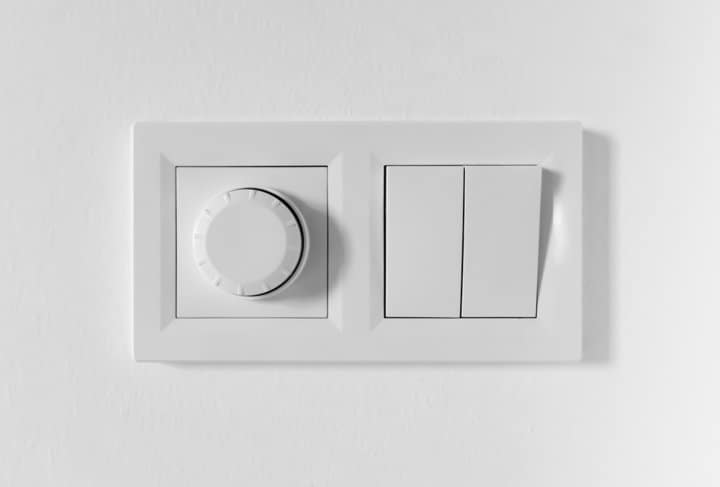
You’ll be glad to know there is no difference in wiring a dimmer vs. wiring an equivalent light switch.
It really is simple to install a dimmer switch in your home.
I say “equivalent” because there are a couple of different kinds of dimmer switches.
Just as there are a couple of different kinds of regular light switches, they act the same.
You have single-pole light switches, also called “2-way” switches in the US or “1-way” switches in the UK and the European Union.
These serve a basic on/off function on their own.
So with a regular light switch, you have a hot wire running from the mains to the switch and a traveler wire from the switch to the load, which is the light.
The switch is either ‘on,’ where there is a connection between those wires, or it is ‘off’ and the link is broken, so the current doesn’t reach the traveler wire.
And single-pole dimmer switches are exactly the same.
Single pole switches may have a switch and a dial/slider, or they may just have the dial/slider, where turning the brightness to zero acts as the ‘off’ position.
Either way, with the dimmer switch in the off position, no current reaches the traveler wire. However, with the dimmer in the on position, the current does reach the light – with the AC power regulated by the dimmer to determine how bright the light is.
The second type of light switch is a multi-switch, called a 3-way in the US and a 2-way in the UK and EU – confusing, right?
With these switches, there are two traveler wires instead of one.
They’re designed for scenarios where you want the light to be controlled by two switches – at the top and bottom of the stairs.
Again, a regular 3-way and a dimmer 3-way are wired exactly the same way.
So if you’re already using a 3-way switch and you want to wire in a dimmer, it’s like-for-like.
What Gauge Wire Is Recommended For Dimmers?
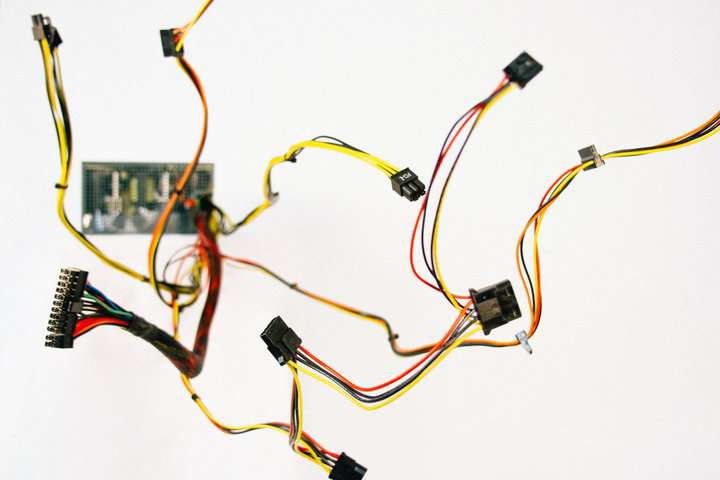
Dimmer switches don’t need a special gauge of wire.
They’re designed to be used on the same wire gauge as a regular light switch.
In the US, there are generally two types of the circuit on a board – either a 15 amp or a 20 amp circuit.
The 15 amp circuits generally use 14 gauge wire, while 20 amp circuits need a heavier wire and tend to use 12 gauge.
Remember that the smaller the number, the thicker/heavier the wire is.
Lighting circuits in domestic homes will almost always be on a 15 amp circuit, so a 14 gauge wire is fine.
Some commercial properties with additional lighting requirements may put the lights on a 20 amp circuit, so 12 gauge wire would be preferred.
Related: Can Dimmer Switches Be Used In Bathroom?
How Do I Wire A Dimmer Switch?
How you wire a dimmer switch will depend on whether it’s a single-pole switch or a 3-way dimmer and whether you’re wiring it into a multi-switch circuit.
While it should be obvious, before you do any wiring at all, shut off the power at the circuit breaker.
Wiring A Single-Pole Dimmer
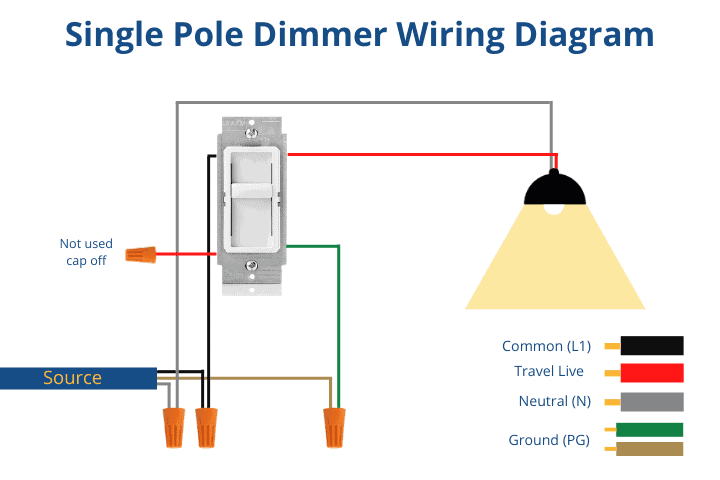
A single-pole dimmer will have three wires.
These will likely be black, red, and then either bare copper or green, but it can vary, so check any labeling or instructions that come with your dimmer if they vary.
The black will be the lead wire, so this needs to connect to the wire from the circuit breaker.
The green or copper wire is the ground, so connect that to the equivalent wire from the circuit breaker.
And the red wire is the traveler wire, which needs to connect to the wire that runs to the bulb.
To connect the wires, just strip them back to reveal an inch or so of bare wire and twist it around the equivalent wire in the wall.
Then add a wire cap to keep them secure and protected.
Wiring A 3-Way Dimmer
If you’ve bought a 3-way dimmer, it will have an extra traveler wire, usually white and red-colored. But you can still use it in a single-switch circuit.
All you need to do is follow the steps above and cap off the extra traveler wire with a wire nut. Just like I am showing on the diagram.
This keeps it from accidentally making contact with other wires and causing a short. Then, the dimmer will work as normal.
Wiring A 3-Way Dimmer Into a Multi-Switch Circuit
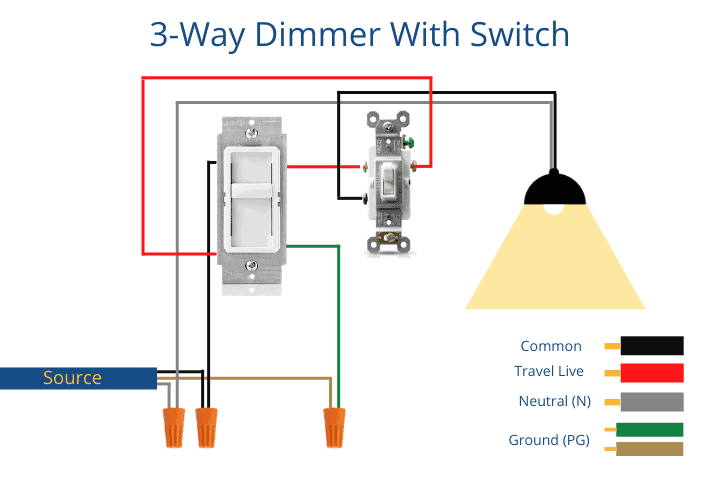
Wiring a 3-way dimmer into a multi-switch circuit is a little more complicated, but it’s still manageable.
Firstly, your dimmer and your regular 3-way switches have 3 main terminals.
There’ll be a common on one side and then two terminals on the other.
For the sake of this example I’m going to assume the dimmer is the nearest switch to the circuit breaker, but it works either way around – just swap them in the steps.
- Connect the mains power from the circuit breaker to the common terminal on the dimmer.
- Run one wire from a traveler terminal on the dimmer to a traveler terminal on the regular 3-way switch.
- Run a separate wire from the second traveler terminal on the dimmer to the opposite traveler terminal on the regular 3-way switch.
- Run a wire from the common terminal on the 3-way switch to the light
Essentially you’re running the power from the mains to the common on the first switch, then connecting the two switches via the traveler terminals. Then the common terminal on the second switch connects to the bulb.
Once done, ensure any ground wires are connected to the ground wires too, and you should be good to go.
In this setup, both switches will control the light.
Whenever one of the switches is in the on position, the light will be on, set at the dimmer switch’s brightness.
The light will stay on when both are off because the circuit is still connected.
But if one is on and one is off, the circuit is broken, and the light will switch off.
Also read: Can Dimmer Switched Trip The Circuit Breaker?
Final Words
If you’re unfamiliar with dimmer switches, you might assume they’re complicated to install, but they’re really simple.
They work the same as any other light switch when it comes to installing them.
The dimmer element is just a part of the switch and doesn’t need special wiring.
Have you installed a dimmer in your home, and if so, how did you find it?
Did you encounter any issues I’ve not covered in this guide?

